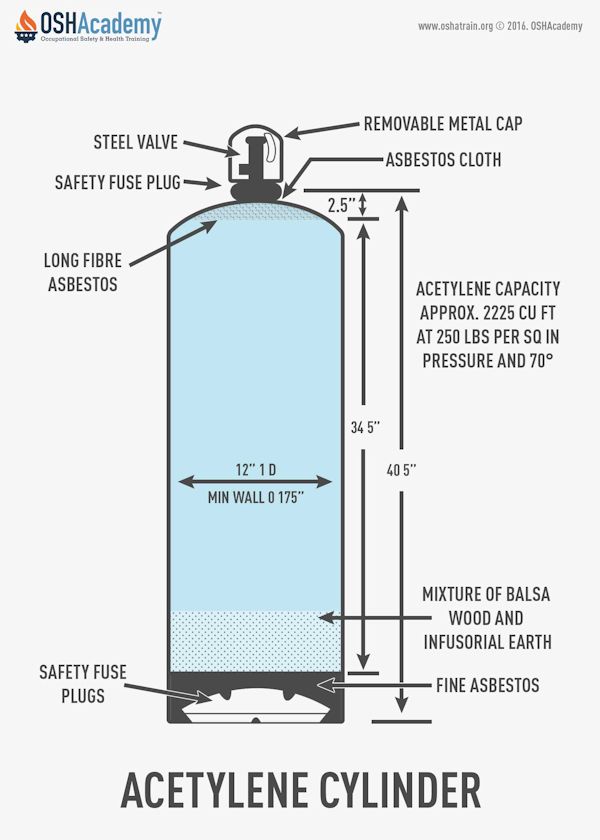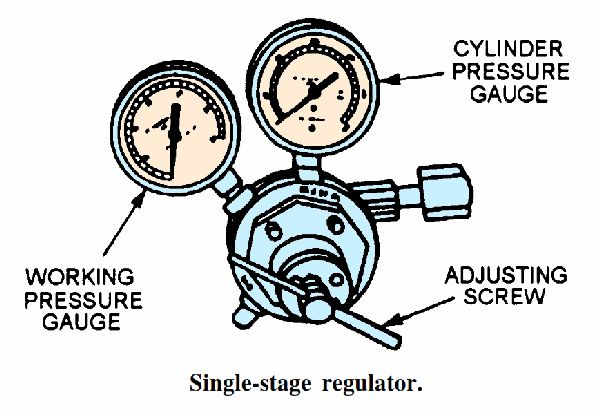Gas Welding
Oxyacetylene Welding/Cutting
Oxyacetylene welding or cutting is also known as torch or gas welding or cutting. Two metals are joined by melting or fusing their adjoining surfaces in the process. This is done by directing a flame from burning gas (usually acetylene) to melt metal at a joint to be welded, and is a common method for welding iron, steel, cast iron, and copper.
Oxyacetylene Cylinders
Oxyacetylene equipment consists of a cylinder of acetylene, a cylinder of oxygen, two regulators, two lengths of hose with fittings, a welding torch with tips, and either a cutting attachment or a separate cutting torch.
Accessories include a friction igniter to light the torch, an apparatus wrench to fit the various connections on the regulators, the cylinders, and the torches; goggles with filter lenses for eye protection; and gloves for protection of the hands. Flame-resistant clothing is worn when necessary.
Regulators
Reduce the gas pressure in a cylinder to a suitable working pressure before it can be used. This is done by a regulator or reducing valve. Regulators are either the single-stage or the double-stage type:
- Single-stage regulators reduce the pressure of the gas in one step;
- Two-stage regulators do the same job in two steps or stages. Less adjustment is generally necessary when using two-stage regulators.
Acetylene regulators and oxygen regulators are of the same general type. However, those designed for acetylene are not made to withstand such high pressures as those designed for oxygen cylinders.
Knowledge Check Choose the best answer for the question.
1-2. Which gas is usually burned when gas or torch welding?
You forgot to answer the question!


